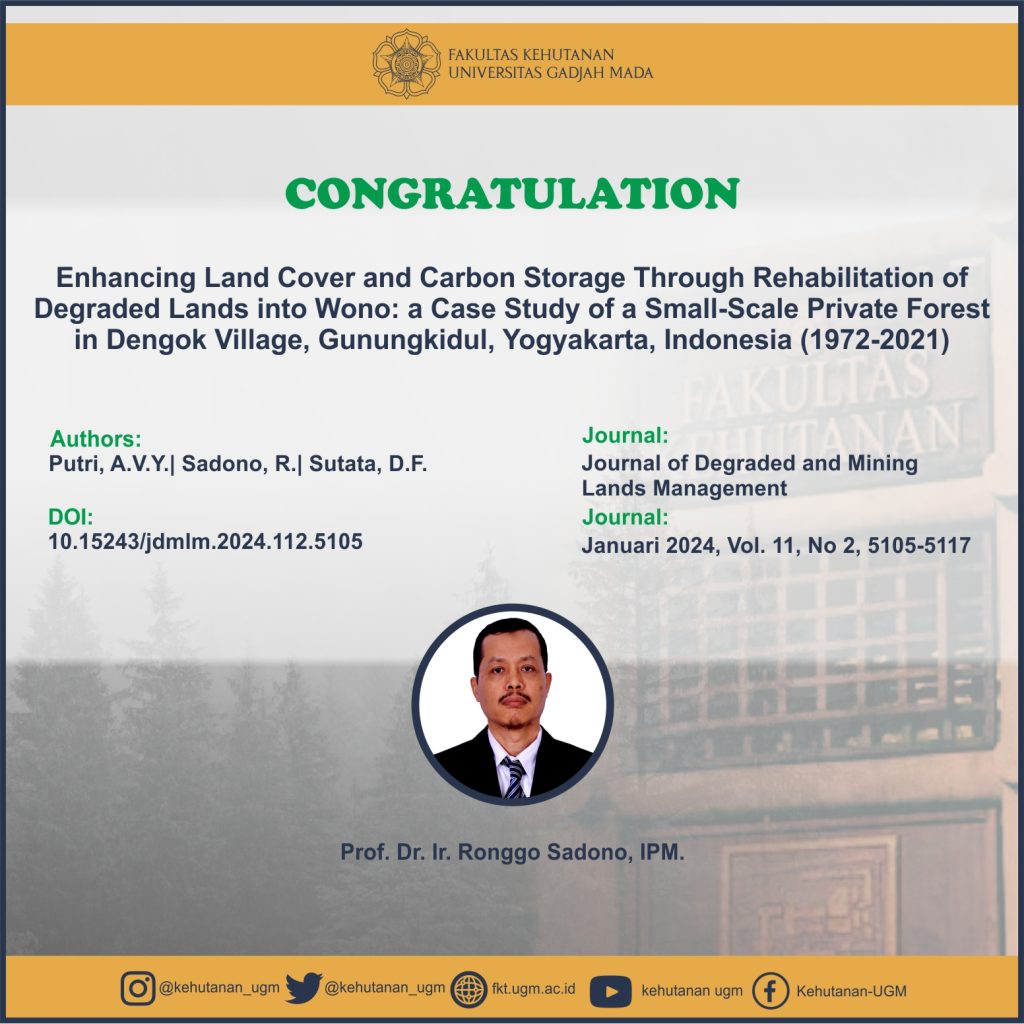
Abstract
The implementation of degraded land rehabilitation programs and community-based forest management certification is widely recognised to enhance the status of wono land cover and aid in climate change mitigation. The expansion of the restoration efforts can be monitored using satellite images to track the progress of operations by observing changes in land cover area. Community forest certification also can enhance the success of land restoration endeavours. Therefore, this study aimed to show the change in forest land cover and the amount of carbon stored from 1972 to 2021. Landsat imagery was used to depict land cover conditions in 1972, 1982, 1993, 2000, 2008, 2014, and 2021, before and after the implementation of restoration and community forest certification programs. The Normalized Difference Vegetation Index approach was employed for satellite images captured in 1972 and 1982, while the Forest Canopy Density method was employed for images in 1993, 2000, 2008, 2014, and 2021, to illustrate the progressive increase in wono land cover. Meanwhile, carbon storage was analysed from 1972 to 2021 using national carbon storage conversion. The results indicated that restoration activity and the establishment of community forest certification increased wono area and carbon storage, which totalled 55.90 ha and 5,499.04 t C between 1972 and 2021. Augmenting carbon storage within wono land cover constituted an effective strategy for mitigating climate change.K
SDGs:
1. SDGs 4:Quality Education
2. SDGs 8:Decent Work and Economic Growth
3. SDGs 11:Sustainable Cities and Communities
4. SDGs 13:Climate Action
5. SDGs 15:Life on Land
Link Dokumen:
Download
